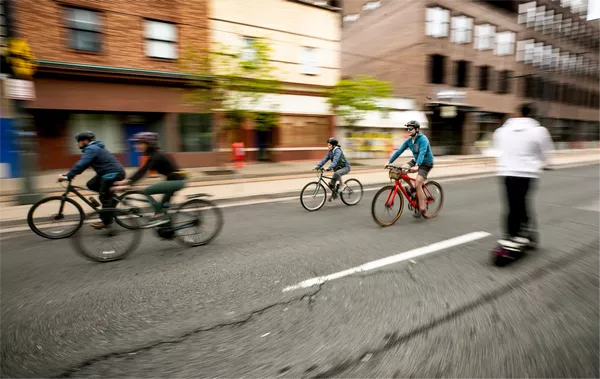When it comes to shedding those stubborn pounds around the midsection, many fitness enthusiasts turn to various forms of cardiovascular exercise. Among these, road cycling has gained substantial popularity due to its accessibility, effectiveness, and enjoyment factor. But the critical question remains: does road cycling burn belly fat? This article delves into the science behind fat loss, the specific impact of road cycling on belly fat, and practical tips for maximizing your cycling workouts to achieve a trimmer waistline.
Understanding Fat Loss and Belly Fat
Before we discuss how road cycling can help you lose belly fat, it’s essential to understand how fat loss works in general. Fat loss occurs when your body is in a caloric deficit, meaning you consume fewer calories than you burn. In this state, your body starts to use stored fat as an energy source.
Belly fat, also known as visceral fat, is the fat stored around your abdominal organs. It’s particularly concerning because it’s associated with various health risks such as heart disease, type 2 diabetes, and certain cancers. Unlike subcutaneous fat, which is stored under the skin, visceral fat is metabolically active and can have a more significant impact on your health.
The Role of Cardio in Fat Loss
Cardiovascular exercise, or cardio, is an effective way to burn calories and contribute to a caloric deficit. Activities like running, swimming, and cycling elevate your heart rate, increase energy expenditure, and help burn fat. Among these, road cycling is a low-impact, enjoyable form of cardio that can be sustained for long periods, making it an excellent choice for those looking to lose weight, including belly fat.
How Road Cycling Burns Calories
Road cycling is a highly efficient calorie-burning exercise. The number of calories burned during a cycling session depends on various factors, including intensity, duration, and individual characteristics like weight and fitness level. On average, a person weighing around 155 pounds can burn approximately 300 calories in 30 minutes of moderate cycling. This number can significantly increase with higher intensity and longer duration rides.
Targeting Belly Fat with Road Cycling
While you cannot spot-reduce fat from specific areas of your body, engaging in regular road cycling can help reduce overall body fat, including belly fat. Here’s how road cycling can contribute to losing belly fat:
1. Caloric Expenditure: As mentioned, cycling burns a significant number of calories, which helps create the caloric deficit necessary for fat loss.
2. Increased Metabolism: Regular cycling boosts your metabolism, meaning you continue to burn calories even after you’ve finished your ride. This post-exercise calorie burn, known as excess post-exercise oxygen consumption (EPOC), contributes to overall fat loss.
3. Enhanced Insulin Sensitivity: Regular exercise, including cycling, improves insulin sensitivity. Better insulin sensitivity means your body is more effective at using glucose for energy rather than storing it as fat.
4. Reduction in Visceral Fat: Studies have shown that aerobic exercise like cycling is particularly effective at reducing visceral fat. Regular aerobic exercise can lead to significant reductions in belly fat over time.
Optimizing Your Cycling Workouts for Belly Fat Loss
To maximize the belly fat-burning potential of your road cycling workouts, consider incorporating the following strategies:
1. Vary Your Intensity: Mixing up your cycling workouts with different intensities can help you burn more calories and keep your body challenged. Incorporate steady-state rides, high-intensity interval training (HIIT), and hill climbs into your routine.
2. Consistency is Key: Regular, consistent cycling is crucial for long-term fat loss. Aim for at least 150 minutes of moderate-intensity or 75 minutes of high-intensity cycling per week, as recommended by health guidelines.
3. Fuel Your Body Right: Eating a balanced diet that supports your cycling efforts is essential. Focus on whole foods, lean proteins, healthy fats, and complex carbohydrates. Avoid sugary snacks and processed foods that can hinder your progress.
4. Strength Training: Incorporate strength training into your fitness routine. Building muscle through weight training can help boost your metabolism and enhance overall fat loss, including belly fat.
5. Stay Hydrated: Proper hydration is vital for optimal performance and recovery. Drink plenty of water before, during, and after your rides.
6. Monitor Your Progress: Keep track of your rides, dietary intake, and body measurements to stay motivated and make necessary adjustments to your routine.
SEE ALSO: Las Vegas Emerges as America’s New Outdoor Sports Capital as Nature-Loving Californians Flock In
Additional Benefits of Road Cycling
Beyond burning belly fat, road cycling offers numerous other health benefits:
1. Improved Cardiovascular Health: Regular cycling strengthens your heart and improves circulation, reducing the risk of heart disease.
2. Mental Health Boost: Cycling can enhance your mood, reduce stress, and alleviate symptoms of depression and anxiety.
3. Increased Muscle Tone: Cycling works various muscle groups, particularly the legs, glutes, and core, leading to improved muscle tone and strength.
4. Joint-Friendly Exercise: Unlike high-impact activities such as running, cycling is gentle on the joints, making it an excellent option for individuals with joint issues or arthritis.
Conclusion
Road cycling is an effective and enjoyable way to burn calories, lose weight, and reduce belly fat. By incorporating regular cycling into your fitness routine and following the tips outlined above, you can achieve a slimmer waistline and enjoy the numerous health benefits that come with this fantastic form of exercise. Remember, consistency, a balanced diet, and a varied workout routine are key to long-term success in burning belly fat and improving overall health. So, gear up, hit the road, and start pedaling your way to a fitter, healthier you!

